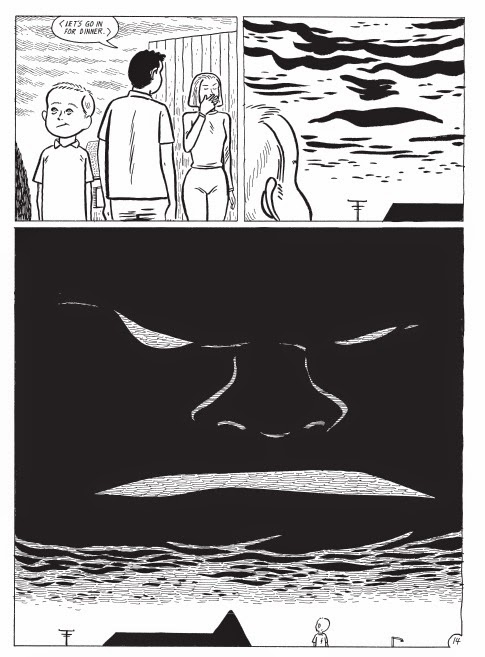Now I bring these all up not just because I am a nostalgic old fogey but also to talk about what today's entry made me think and feel as I read it. Twelve Gems is a classic space opera done in a black and white style with lots of cross-hatching. I felt a lot like I did in reading fantastic space stories of my childhood, and the frank and blunt attributes of the story and artwork also harkened back to a child-like sense of storytelling where anything was possible but things were also tethered to a familiar framework. I don't mean that in a bad way, like this book is childish, because I do not think that is entirely true. I think my reaction to it borders on my wondering if it is meant as a sort of parody. For instance, the stock, stereotypical characters seem to be crying out to be analyzed as commentary about genre comics. But the book's earnest storytelling and detailed artwork do not betray as much as a wink to the audience. All of this meandering thought is to say that I do not know much about what to make of this book but to say that I really enjoyed reading and re-reading it.
The plot is a simple one. A motley band of space folk are joined together in a common quest, hired to find twelve space gems for an eccentric scientist. Dr. Z wants them to animate a female robot, which seems to be an unrequited love object. But there may be something more sinister to his intentions. The band of space explorers is a trio:
 |
| Dogstar is a winged dog who can talk, repair anything, and fly spaceships. He's shy and very resourceful. Of course, he has a crush on... |
 |
| Venus, a buxom space warrior who wears a slinky outfit and is tough as nails. |
This book is the product of Lane Milburn, a comics creator who has published the Xeric Grant winning graphic novel Death Trap and the mini-comic The Mage's Tower. Milburn speaks more about his work on this book in this interview.
Reviews I have read of this book are varied, though they tend to be positive. Ben Humeniuk wrote about it, "There’s a surreal, Adult Swim quality to some of the gags, and the combat is no holds-barred. We’ve got blood. Punches. Explosions. Laughs. It’s episodic, earnest, and it’s totally a riot." Hillary Brown offered a conflicted view, writing that "sometimes the amateurness of the execution (the Napoleon Dynamite-like shading, the clunkiness of the plot, the extreme weirdness of the third act) is strangely charming, but it mostly illicits confusion and questions like 'Am I missing something?' Perhaps, but it may not be worth the effort to discover what that something is." Alger C. Newberry III offered this as his final verdict: "A valuable gem to add to any collection focusing on independent comics and alternative storytelling with its avant-garde narrative voice, classical art style, and brilliantly paced sense of adventure."
As you can see from the reviews, individual mileage may vary, but I enjoyed reading Twelve Gems very much.
Twelve Gems was published by Fantagraphics Books, and they provide a preview and more information here.





















